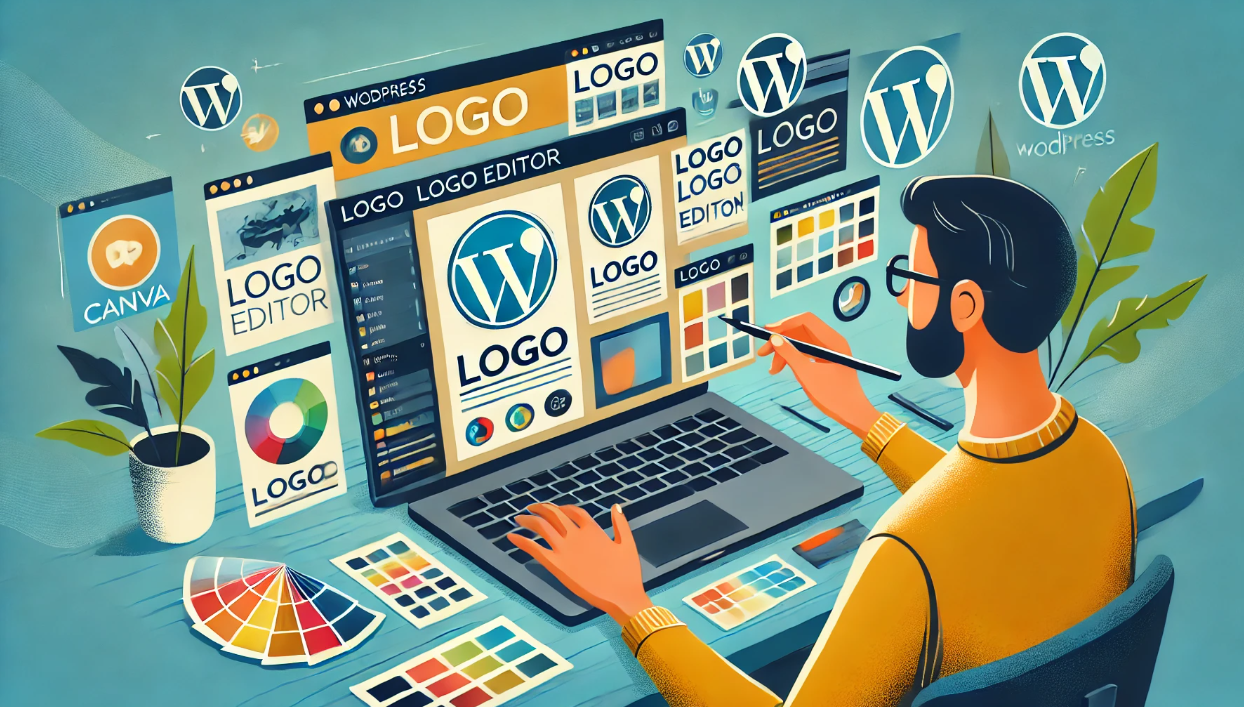Step-by-Step Guide to Creating a Logo for Your WordPress Website Without a Designer
Your website’s logo is often the first thing visitors notice, making it a crucial element of your brand identity. But what if you’re running a WordPress website and don’t have the budget for a professional designer? Don’t worry! With the rise of intuitive design tools like Canva, Looka, and Hatchful, creating a professional-looking logo has never been easier.
In this step-by-step guide, we’ll walk you through the process of designing your logo using these tools, uploading it to your WordPress site, and ensuring it fits seamlessly with your theme.
Why a Good Logo Matters for Your Website
Your logo isn’t just a pretty graphic—it represents your brand. A well-designed logo:
- Builds trust and credibility with your audience.
- Creates brand recognition and consistency across platforms.
- Makes your website look polished and professional.
Step 1: Define Your Brand Identity
Before jumping into logo design, take a moment to clarify your brand identity. Ask yourself:
- What does my brand represent?
- Are you playful, professional, modern, or traditional?
- Who is my audience?
- Consider age, interests, and industry.
- What colors or fonts resonate with my brand?
- Research color psychology and font styles that align with your message.
For example, a tech website might lean toward sleek fonts and blue tones, while a wellness blog might use earthy colors and flowing scripts.
Step 2: Choose a Logo Design Tool
Here are three beginner-friendly tools to help you design your logo:
1. Canva
- Best For: Customizable designs with drag-and-drop simplicity.
- How It Works: Canva offers thousands of pre-made templates that you can edit to suit your needs.
- Features:
- Access to fonts, shapes, icons, and images.
- Ability to download logos in various formats (PNG, JPEG, SVG).
- Free and premium plans available.
2. Looka
- Best For: AI-generated logos tailored to your brand.
- How It Works: Enter your brand name, select your preferences (colors, fonts, and style), and Let Looka’s AI generate multiple logo options.
- Features:
- Customizable logo templates.
- Branding packages (social media, business cards).
- Paid-only service.
3. Hatchful by Shopify
- Best For: Quick and easy logo creation for beginners.
- How It Works: Answer a few questions about your business, and Hatchful generates logo suggestions.
- Features:
- Free logo downloads.
- Pre-made templates for specific industries.
- Limited customization options.
Step 3: Design Your Logo
Using Canva
- Sign Up and Search for “Logos”:
- Create a Canva account and type “Logo” in the search bar to view templates.
- Choose a Template:
- Pick one that aligns with your industry and brand style.
- Customize Colors, Fonts, and Icons:
- Change the text, tweak colors to match your brand palette, and add your own icons or graphics.
- Download Your Logo:
- Export it as a PNG for a transparent background or SVG for scalability.
Using Looka
- Visit Looka’s Website:
- Enter your business name, tagline (optional), and select your preferred styles and colors.
- Review AI-Generated Logos:
- Looka will display a variety of logos tailored to your input.
- Customize Your Chosen Design:
- Adjust fonts, icons, and layouts to finalize your logo.
- Download the Logo:
- Pay to access your logo in multiple formats, including high-res PNG and vector files.
Using Hatchful
- Go to Hatchful:
- Answer a few questions about your business, including your industry and visual style preferences.
- Browse Logo Suggestions:
- Select your favorite design from the AI-generated options.
- Download the Logo:
- Download your logo for free in a ZIP file with multiple size options.
Step 4: Upload Your Logo to WordPress
Once you’ve created your logo, it’s time to add it to your WordPress website.
1. Log in to Your WordPress Dashboard
- Go to
Appearance > Customize.
2. Navigate to the Site Identity Section
- In the WordPress Customizer, click Site Identity.
- You’ll see options to upload your Site Logo.
3. Upload Your Logo
- Click Select Logo, upload your file, and crop it if necessary.
- Use a PNG file with a transparent background for a polished look.
4. Adjust Logo Settings
- Use your theme’s customization settings to resize or position your logo for optimal display.
5. Save and Publish
- Review your site on desktop and mobile to ensure the logo fits well and looks professional.
Step 5: Optimize Your Logo for SEO and Performance
A large, unoptimized logo file can slow down your website. Here’s how to ensure your logo doesn’t hurt performance:
- Compress the File: Use tools like TinyPNG or ShortPixel to reduce file size without losing quality.
- Use Proper Dimensions: Check your theme’s recommended logo size and resize your file accordingly (e.g., 250×100 pixels).
- Add Alt Text: Include descriptive alt text for your logo to improve SEO and accessibility (e.g., “Brand Name Logo – Blue and White Design”).
Tips for Creating a Great Logo
- Keep It Simple: A clean and minimal design is more memorable and versatile.
- Choose the Right Colors: Stick to 2-3 colors that represent your brand and ensure they look good on both light and dark backgrounds.
- Make It Scalable: Your logo should look great on everything from a favicon to a billboard.
- Test It Across Platforms: Check how your logo looks on desktop, mobile, and social media.

